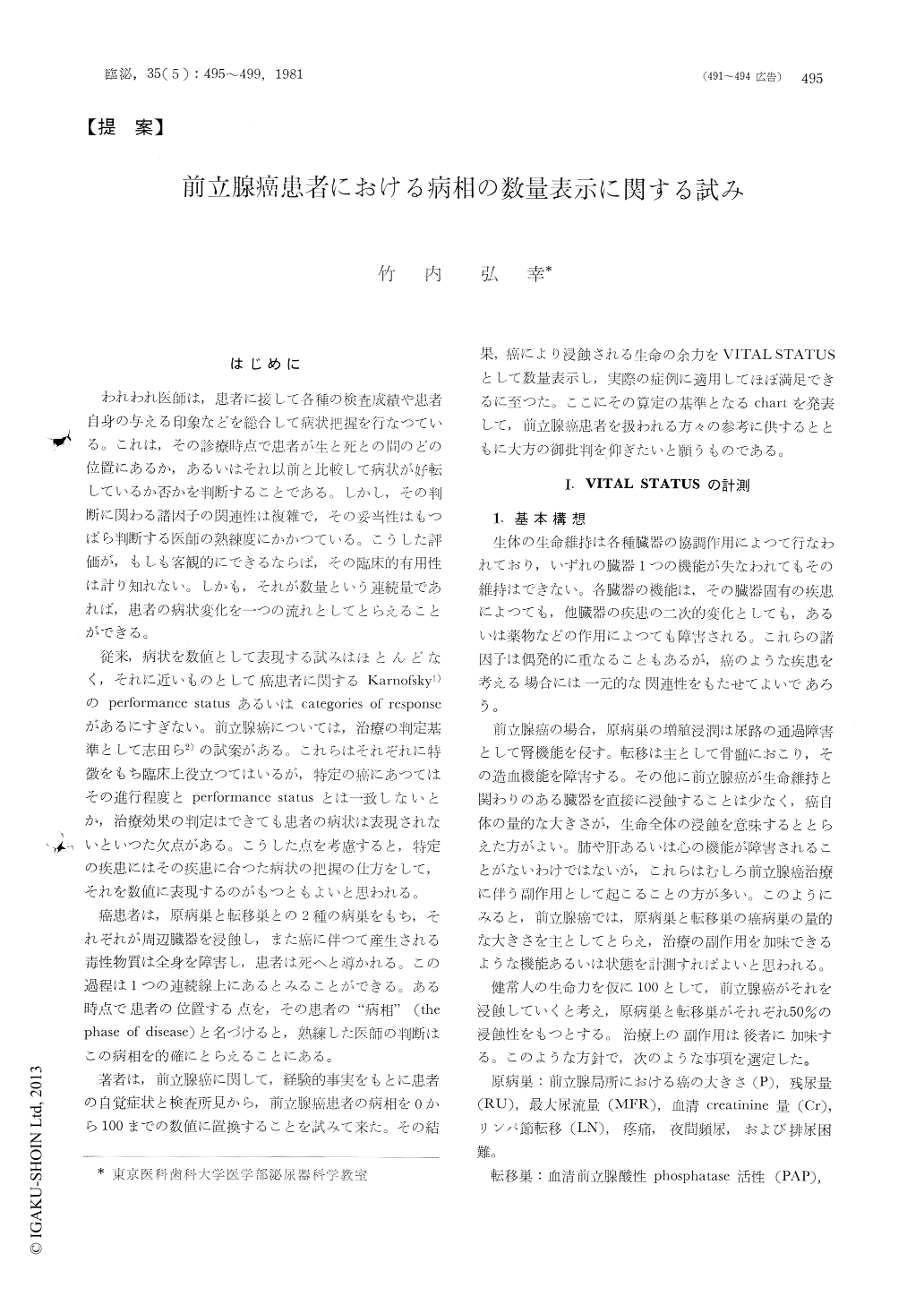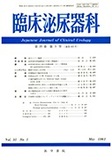Japanese
English
- 有料閲覧
- Abstract 文献概要
- 1ページ目 Look Inside
はじめに
われわれ医師は,患者に接して各種の検査成績や患者自身の与える印象などを総合して病状把握を行なつている。これは,その診療時点で患者が生と死との間のどの位置にあるか,あるいはそれ以前と比較して病状が好転しているか否かを判断することである。しかし,その判断に関わる諸因子の関連性は複雑で,その妥当性はもつばら判断する医師の熟練度にかかつている。こうした評価が,もしも客観的にできるならば,その臨床的有用性は計り知れない。しかも,それが数量という連続量であれば,患者の病状変化を一つの流れとしてとらえることができる。
従来,病状を数値として表現する試みはほとんどなく,それに近いものとして癌患者に関するKarnofsky1)のperformance statusあるいはcategories of responseがあるにすぎない。前立腺癌については,治療の判定基準として志田ら2)の試案がある。
Any cancer invades the vitality of its host and if untreated will cause death. Therapy is one of the means employed to enable the patient to survive. But it often has an adverse effect by its reverse reaction, especially in chemotherapy. In these ways the cancer patient drifts between survival and death. If the patient's physical condition (the phase of the disease) can be indicated by a number, its clinical usefulness is very high.
The author has been trying to express the phase of disease in patients with prostatic carcinoma as numbers, and has made out a model chart to measure the residual vitality.

Copyright © 1981, Igaku-Shoin Ltd. All rights reserved.


